Wiper fluid is vital for your vehicle. It helps keep your windshield spotless and ensures you can drive safely. But imagine needing it urgently and finding out that wiper fluid is not coming out. This blog post will delve into common reasons why this happens and offer some solutions.
We aim to help you pinpoint and fix the issue with your wiper fluid system. Proper knowledge lets you quickly sort out your car’s wiper fluid system. This will help keep your view clear and make your trip safer.
Why Windshield Wiper Fluid Is Not Coming Out?
Clogged Nozzles
Clogged nozzles are a common cause of windshield washer fluid not dispensing correctly. The accumulation of dirt, debris, and mineral deposits can block the tiny holes from which the fluid is supposed to flow. This issue can be exacerbated in colder climates where ice can form and further obstruct the nozzles.
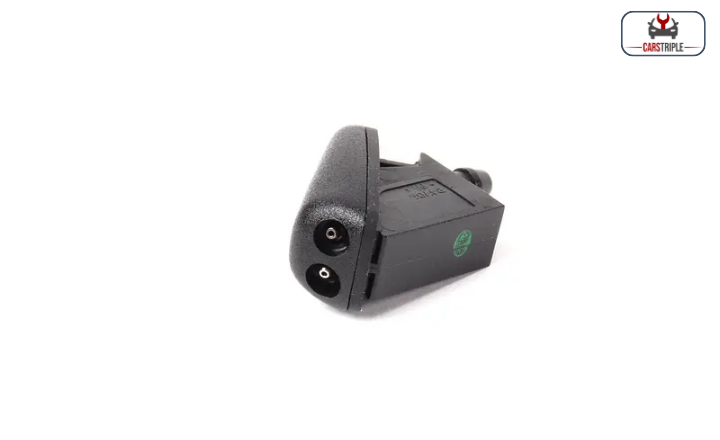
To resolve this problem, you could carefully use a fine needle or pin to dislodge any visible blockages. It’s essential to do this gently to avoid damaging the nozzles. If hard water has caused mineral buildup, soaking the nozzles in a vinegar solution can help dissolve these deposits. After washing, remember to thoroughly rinse the nozzles with clean water before reinstalling them.
Broken or Disconnected Hoses
Broken or disconnected hoses can prevent the wiper fluid from spraying correctly. The washer fluid travels from the reservoir to the nozzles via these hoses, and any damage or disconnection can interrupt this flow, causing a failure in the system.
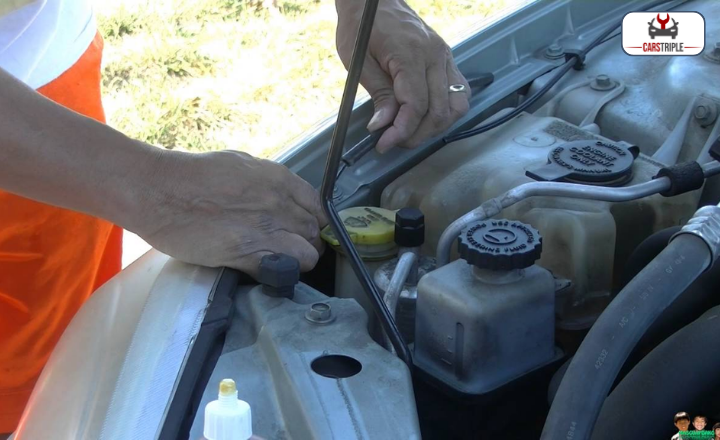
To resolve this issue, it’s essential to inspect all of the hoses for visible signs of damage, such as cracks, tears, or disconnections. If any are found, replacing or reconnecting them should rectify the problem. You must also ensure these hoses are routed correctly throughout your vehicle to avoid any pinching or kinking that could block fluid flow.
Empty Washer Fluid Reservoir
An empty washer reservoir is a common reason for the fluid not coming out. Many drivers may need to pay more attention to this simple issue, especially if they do not frequently use their windshield washers.
To address this problem, refill your washer fluid reservoir with the appropriate type of washer fluid. It’s also essential to inspect the system for any potential leaks which could be causing the fluid to drain unintentionally.
Faulty Washer Fluid Pump
A faulty washer fluid pump can be identified by unusual sounds when you try to use the washer fluid or simply because no fluid comes out when it’s supposed to. Some other symptoms may also include a weak flow of washer fluid or inconsistent fluid spurts.
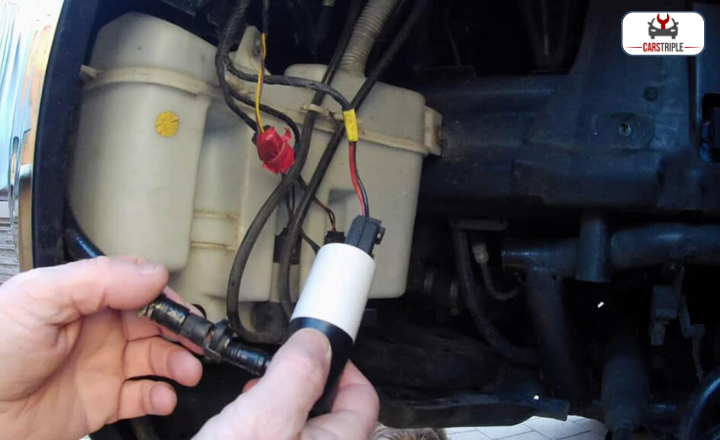
You have two main options if you suspect that your washer fluid pump is not working correctly. You can attempt to replace the pump yourself, which can be straightforward if you’re comfortable with basic car maintenance tasks and have the right tools. If you’re not confident doing this yourself, take your car to a professional mechanic who can diagnose and fix it.
Electrical Issues
If your wiper fluid is not spraying, it could be due to various electrical issues, such as a blown fuse, damaged wiring, or a faulty switch. These problems can disrupt the power supply to the washer fluid pump, making it inoperative. It would help if you started by checking the fuse box to ensure that the fuse for the washer fluid pump is still intact. Carefully inspect the wiring for any visible signs of damage.
After these checks and possible replacements, if the issue persists, then there’s likely an underlying problem that needs professional attention. It is advisable to consult with a professional mechanic who can conduct a more detailed diagnosis and carry out necessary repairs on your vehicle’s electrical system.
Frozen Washer Fluid
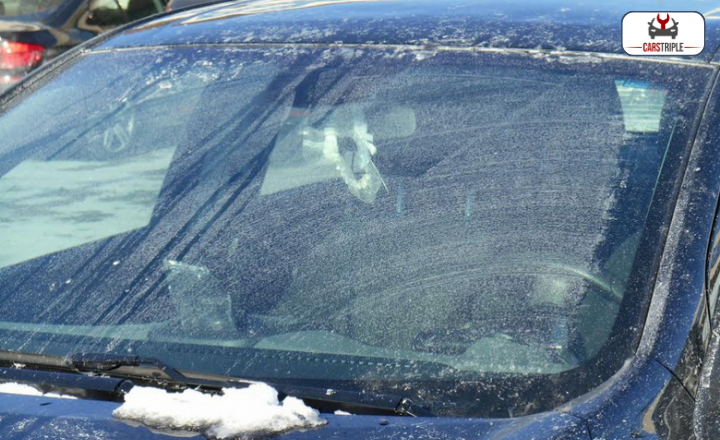
In icy conditions, it’s possible for washer fluid to freeze within the reservoir or hoses, which can prevent it from being sprayed onto your windshield. Consider using a washer fluid formulated explicitly for colder temperatures to resolve this issue. These fluids are designed with a lower freezing point, preventing them from turning into ice under harsh winter conditions.
You can also park your vehicle in a warmer environment. This could be in a heated garage or any indoor place where temperatures are controlled. If neither of these options is available, consider using a portable heater to warm up the engine compartment and thaw the frozen fluid.
How do you fix when the windshield Wiper Fluid is Not Coming Out?
Clean or Replace Clogged Nozzles
Cleaning the nozzles is an excellent first step in troubleshooting clogged windshield washer fluid nozzles. A fine needle or pin can remove visible debris, and soaking them in vinegar can help dissolve mineral deposits. It’s important to remember to rinse them with clean water after washing.
If cleaning doesn’t solve the problem or the nozzles are significantly damaged, replacement may be necessary. You can purchase new nozzles from an auto parts store.
Repair or Replace Damaged Hoses
If your windshield wiper fluid is not coming out due to damaged or disconnected hoses, you must repair or replace them. Start by reconnecting any disconnected hoses and ensure they are routed correctly to avoid kinking or pinching.
You have to thoroughly inspect the hoses for any signs of wear or damage, such as cracks or splits. If there are any damaged hoses, it’s best to replace them with new ones. You can easily purchase these from auto parts stores. If you’re comfortable doing some essential car maintenance, you can return them yourself with patience.
Refill Washer Fluid Reservoir
Refilling the washer reservoir is a simple fix if your windshield washer fluid isn’t coming out. First, locate the reservoir in your vehicle, typically marked with a windshield icon or something similar. Purchase the correct type of washer fluid for your vehicle and weather conditions, as using the wrong one could cause damage or ineffective cleaning. Using a fluid with a lower freezing point is essential for colder climates to prevent any freezing issues.
Regularly checking and topping off your washer fluid can help avoid this problem. It’s recommended to check the fluid level at least once a month and before long trips.
Replace Faulty Washer Fluid Pump
Replacing a faulty washer fluid pump involves first locating the pump, which is usually near the bottom of the fluid reservoir. You should disconnect the electrical connector and hoses that are attached to it. Once these have been safely removed, you can remove the faulty pump from its place in the reservoir.
After removing the old pump, install your new washer fluid pump. Ensure to reconnect all previously disconnected parts, such as the electrical connector and hoses. To verify if your replacement was successful, test your system to see if the fluid sprays correctly.
Address Electrical Issues
Electrical issues are often the culprits behind problems with the windshield washer fluid not coming out. Start by inspecting your vehicle’s fuse box and look for any blown fuses associated with the washer fluid system. If you find any, replace them immediately, as they could be causing the issue.
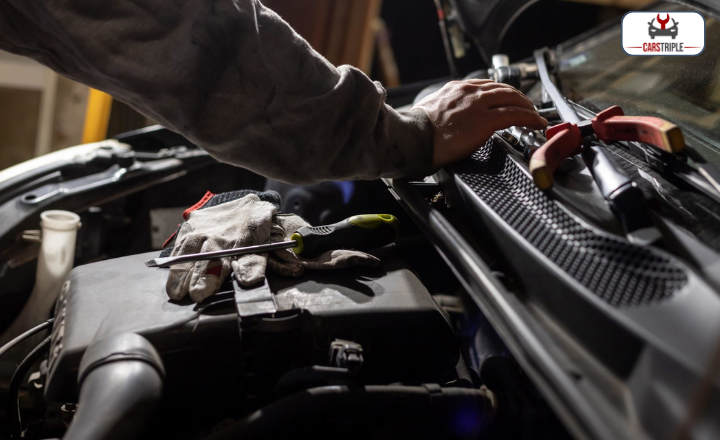
Carefully examine the wiring related to the washer fluid system for any signs of damage or wear. If you spot any problems, these wires may need to be repaired or replaced.
After these steps, if you’re still experiencing issues, you should seek help from a professional mechanic. They can diagnose more in-depth and identify if a faulty switch or other electrical components within your vehicle are causing the problem with your windshield washer fluid system.
How Do You Know If Your Washer Pump Is Bad?
Stay alert for these common signs that may indicate a malfunctioning washer pump:
No fluid spraying
The windshield washer system might not work even when the reservoir is complete, and the nozzles are clear. This could mean that there’s a problem with the washer pump. The pump is critical in driving the washer fluid from the reservoir to your windshield.
There might also be a problem with the electrical connections to the pump or a blown fuse that controls the pump.
Unusual noises

Unusual noises from your washer pump are often a sign of trouble. A well-functioning washer pump should operate quietly and smoothly. If you start hearing strange noises like buzzing, humming, or grinding when you activate the washer system, this could indicate that your pump is failing.
These noises can be due to various reasons, such as worn-out bearings, a damaged impeller or even a blockage in the system. It’s crucial to address these issues promptly to prevent further damage.
Fluid leaks
A damaged or improperly sealed pump might be the reason for the washer fluid leaking. You can usually spot this if there’s fluid around the pump area or under the car close to the reservoir. This could be due to a faulty seal, a broken hose, or even a crack in the reservoir itself.
The fluid loss can indeed affect the functionality of your washer system. A low washer fluid level will prevent the system from effectively cleaning your windshield, impairing visibility and potentially creating unsafe driving conditions. It’s recommended to have this issue inspected and repaired by a professional mechanic as soon as possible to avoid further damage and ensure the safe operation of your vehicle.
Intermittent operation
Intermittent operation of your washer fluid could indicate a failing pump or an electrical issue. The pump is responsible for pushing the washer fluid from the reservoir to the nozzles, and if it needs to be fixed, it can lead to consistent spraying. Electrical issues can also cause this problem, as they might interrupt the power supply to the pump intermittently.
How Do You Unclog A Wiper Fluid Sprayer?
Unblocking your wiper fluid sprayer is usually simple. Use these easy steps to fix your sprayer:
Locate the nozzle
The washer fluid nozzles on your vehicle are typically located in two main areas: either on the hood of your car or at the base of your windshield. Small, often round or oval-shaped outlets spray washer fluid onto your windshield when activated.
Inspect the nozzle
Examine the nozzle opening for any visible debris or dirt obstructing its path. Use a soft brush or cloth to clean the area gently if you notice any obstructions.
Use a fine needle or pin
Carefully insert the needle or pin into the opening and gently move it around to dislodge any debris or dirt causing a blockage.
Use compressed air
You have compressed the best method to remove any remaining debris from the washer fluid nozzle. Holding the can a short distance from the nozzle is essential, as applying too much pressure could potentially damage it.
Test the sprayer
Once you’ve cleaned your sprayer’s nozzle, checking the washer fluid system is crucial. You need to confirm that the fluid sprays correctly. Sometimes, the nozzle remains blocked or doesn’t spray as it should. In such cases, cleaning the nozzle again could be required.
Soak in vinegar (optional)
Soak the nozzles in a solution of white vinegar and water. After trying other cleaning methods, it can help if your vehicle’s nozzles are still clogged. The acetic acid in the vinegar can dissolve mineral deposits that may be causing the blockage.
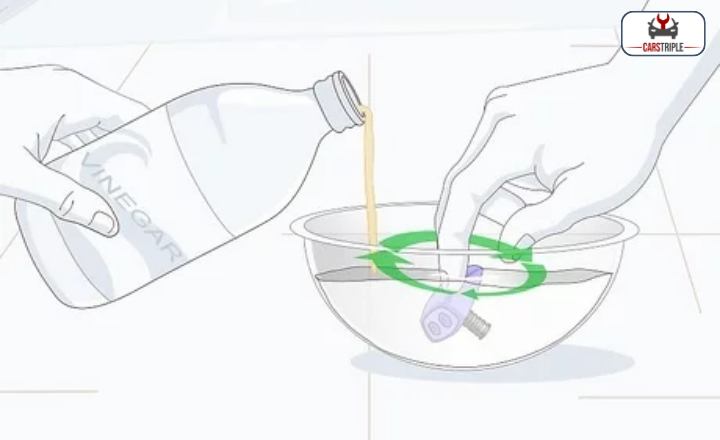
After soaking the nozzles in this solution for several hours, it’s crucial to rinse them thoroughly with clean water to remove any remaining vinegar or loosened debris. Once they’re clean and dry, you can reinstall them on your vehicle. This method is generally safe and effective for most types of nozzle materials.
Check for other issues
If the problem isn’t fixed after cleaning the nozzles, several other potential issues must be considered. One common issue is a clogged hose. The washer fluid travels from the reservoir to the nozzles through hoses, which can become blocked over time. If this happens, the fluid cannot reach the nozzles to be sprayed onto your windshield.
Conclusion
If your windshield wiper fluid is not coming out, it could be due to multiple problems like a clogged nozzle or a broken pump. This article gives you the steps to figure out and solve the issue yourself; there is no need for an expert. Make sure you keep an eye on your washer fluid levels to avoid sudden problems. Maintaining your car’s wiper fluid system is simple with the right tools and instructions. So next time your windshield wiper fluid isn’t coming out, instead of panicking, take control and fix it yourself!
FAQ’s
How can I check if the nozzles are clogged?
You can check this by running your wipers and seeing if any fluid comes out. If it doesn’t, you can try cleaning the nozzles with a pin or compressed air.
Can cold weather affect my windshield wiper fluid from coming out?
In freezing conditions, windscreen wash can freeze in the pipes or nozzles, preventing it from spraying onto the windscreen. Using a winter-grade fluid can help prevent this issue.
